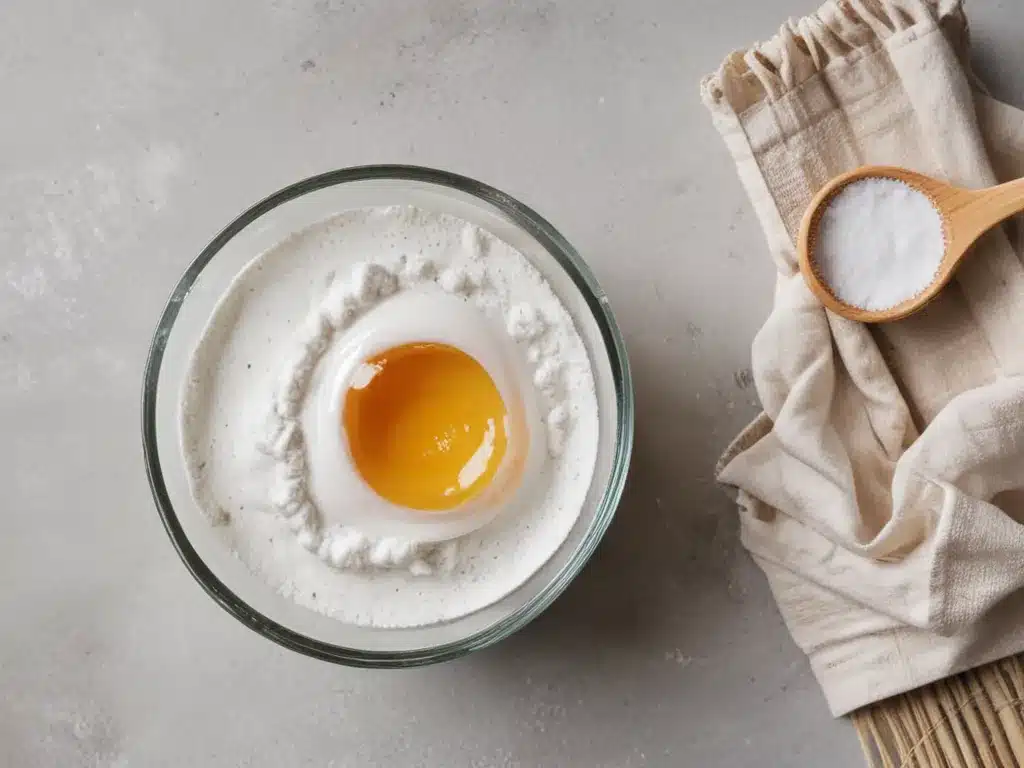Why Choose Baking Soda Over Bleach
As spring arrives and I start my seasonal cleaning, I’m looking for more sustainable ways to tidy up my home. Bleach has been my go-to for tough stains and disinfecting, but it’s full of harsh chemicals. Baking soda is a natural alternative that can be just as effective for many cleaning tasks.
Baking soda is non-toxic and biodegradable. It’s a mild alkali that can lift dirt and freshen surfaces. When combined with some water or vinegar, it becomes a simple but powerful cleaning solution. Using baking soda means avoiding the toxic fumes and potential skin and eye irritation that comes with chlorine bleach. It’s better for my family’s health and safer for the environment.
Here are some of the top reasons to make the swap:
- Bleach contains sodium hypochlorite, which can cause breathing problems and irritate eyes, skin, and the respiratory tract. Baking soda is non-hazardous.
- Bleach is toxic to marine life. Its compounds can persist in waterways. Baking soda biodegrades naturally.
- When bleaching, surfaces should be rinsed to avoid leaving toxic residue. Baking soda can often be left on surfaces.
- Combining bleach and other cleaners like vinegar can create toxic chlorine gas. Baking soda and vinegar safely react to boost cleaning power.
- Bleach stains and fades clothing and fabrics over time. Baking soda is gentler on fabrics.
As a bonus, baking soda is highly affordable compared to many commercial cleaners. With just one simple ingredient, I can make safe and effective DIY cleaners.
How Baking Soda Works as a Cleaner
Baking soda (sodium bicarbonate) is a mild base that interacts with acids, fats and proteins. When dissolved in water, it forms an alkaline solution. This gives it several properties that make it great for cleaning:
- It lifts and absorbs dirt, grease and grime.
- It acts as a gentle abrasive on surfaces.
- It reacts with acid ingredients like vinegar to make cleaning bubbles.
- It can deodorize surfaces by neutralizing acidic odors.
- It has some antimicrobial properties to inhibit bacteria, mold and viruses.
The small granules of baking soda help to scrub away dirt and stains. When combined with a liquid, it dissolves grime so it can be wiped away. It won’t bleach surfaces or kill germs as strongly as chlorine bleach, but it can freshen and clean without the health and environmental risks.
I can also create a baking soda paste by mixing 3 parts baking soda with 1 part water. This makes a nice thick scouring scrub. The paste clings to vertical surfaces like tile, tubs and sinks for cleaning.
What to Clean with Baking Soda
In most cases, I can use baking soda instead of bleach for common household cleaning tasks:
Kitchen
- To clean countertops, make a paste with baking soda and water. Scrub and rinse.
- For cleaning the refrigerator, dissolve baking soda in warm water for wiping down shelves and drawers. It deodorizes too.
- To unclog drains, pour 1/2 cup baking soda down the drain followed by 1/2 cup vinegar. Let it fizz for 15 minutes then rinse with hot water.
- For stainless steel sinks, make a paste and scrub gently to remove stains. Rinse well.
- To clean tile floors, sprinkle baking soda and sweep it around before mopping. It will help lift grease.
Bathroom
- For bathtubs and sinks, make a paste and use a sponge to scrub away soap scum and mildew. Rinse thoroughly.
- For moldy caulk and grout, apply a paste and let it sit for 15-20 minutes before scrubbing.
- Toilets can be scrubbed with a baking soda paste for hard water stains. Let sit briefly before scrubbing and flushing.
- Glass shower doors can be cleaned by wiping with a baking soda solution. Rinse well.
Laundry
- Add 1/2 cup baking soda to the detergent compartment to boost cleaning power on clothes.
- For smelly gym clothes or towels, soak them in a mixture of 1 cup baking soda + 1 quart warm water for several hours before washing.
- For white clothes stain removal, make a paste with baking soda and water and gently rub on stains before washing.
Floors
- For vinyl flooring, sweep floors first then mop using a baking soda solution for a deeper clean.
- For tile floors, sprinkle baking soda and sweep before mopping for extra grime-lifting power.
- A baking soda paste can help scrub scuff marks off linoleum floors. Just don’t let the paste dry on the floor before rinsing.
Baking Soda as a Bleach Alternative is Better for My Health and the Environment
With its natural cleaning and deodorizing power, non-toxic baking soda is a product I want to rely on more instead of traditional bleach. It may require a bit more scrubbing muscle at times, but the trade-off for having a safer cleaning routine is worth it. I feel better knowing I’m not exposing my family to the caustic chemicals found in bleach. Plus, choosing biodegradable baking soda reduces pollution and keeps those chemicals contained.
As I continue learning more sustainable living habits, using simple multipurpose products like baking soda for cleaning allows me to make my home more eco-friendly. My cabinets no longer need to be stocked with an arsenal of harsh chemicals, and I have peace of mind knowing I’m making better choices. This spring cleaning season, I’m definitely excited to swap bleach for baking soda throughout my home.







